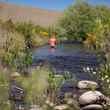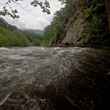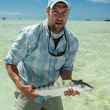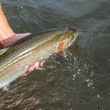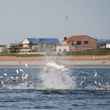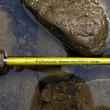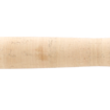Jim Murphy, the founder of Redington and former president of Hardy North America has teamed up with Barclay family, owners of the Douglaston Salmon Run on New York's Salmon River, to bring a new name to the worlds of fly and spin fishing. The new company, called Douglas Outdoors, will debut their lineup of new fly rods, fly reels and spin rods at this years IFTD/ICAST show this July in Orlando, Florida.
The Douglaston Salmon Run (DSR) is a privately-held 2.5 mile stretch of water on the lower reaches of the Salmon River, managed primarily as a catch and release fishery, where the number of fisherman admitted via the DSR's pay-to-play admittance system is limited each day. The run is one of the bright spots on the Salmon -- an amazing fishery with dizzying counts of salmon, steelhead and big lake-run brown trout -- which is persistently prevented from becoming one of the true jewels of the lower 48 by the massive hordes of rod-wielding dimwits that descend on the river each autumn to drink, litter and "fish" in often elbow-to-elbow conditions, snagging and lining the vast majority of each day's "catch", all the while generally balking in the face of conservation-minded principles and ethical outdoorsmanship. The DSR, for the last several decades, has offered a respite from these conditions and a chance to experience the Salmon River's true potential.




